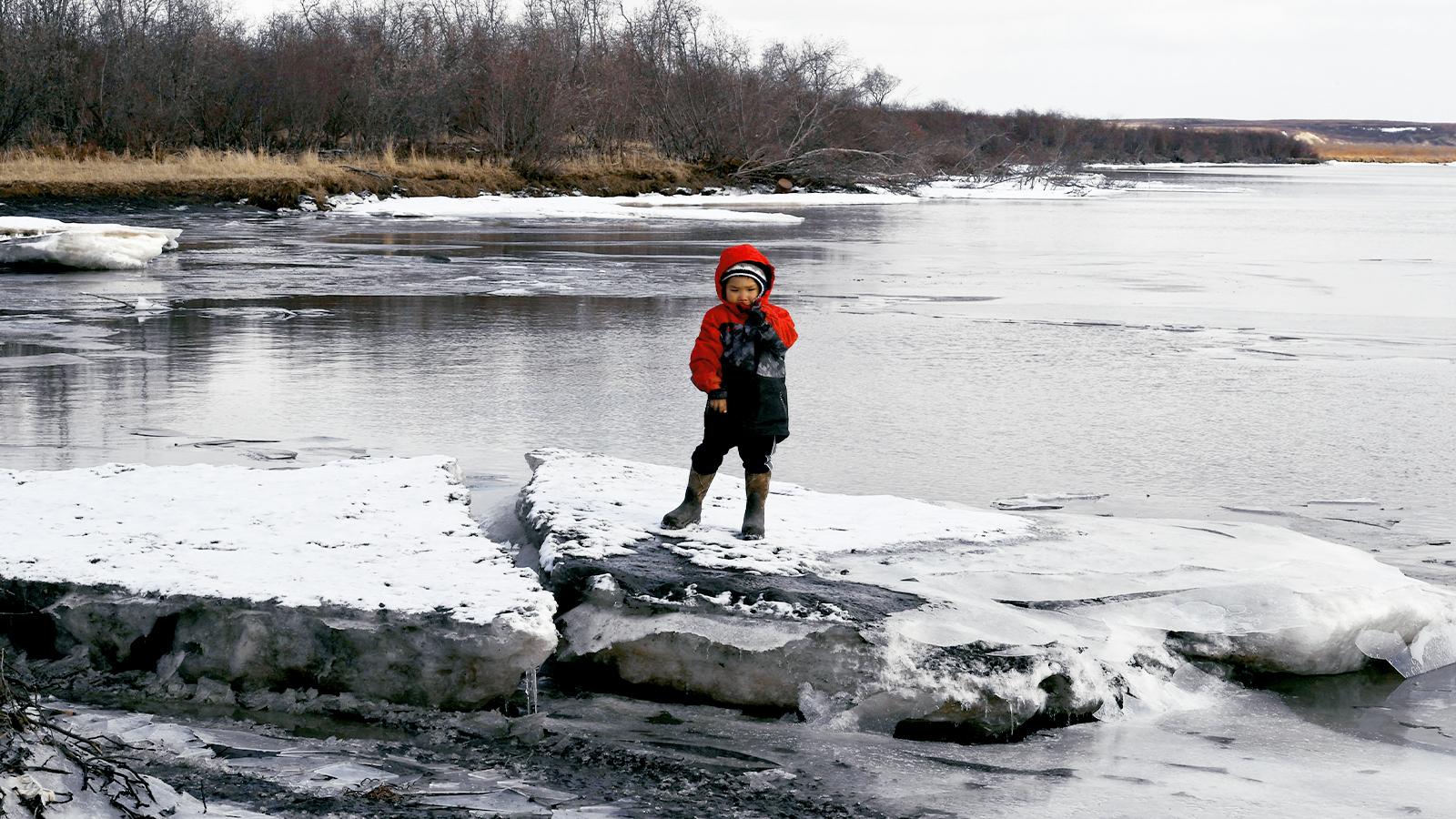Every time you eat a blueberry, the microbiome in your gut gets to work. Bacterial enzymes attack the organic compounds of the fruit: a burbling, gurgling digestive process that can, often to our embarrassment, cause us to pass gas. That may not be such a big deal for a human, but new research shows that the microbial action in icy Arctic soils might not be so different. On a global scale, it could mean the planet belching up more dangerous greenhouse gases.
Permafrost, the frozen earth that covers roughly a quarter of the Northern Hemisphere, traps an enormous amount of planet-heating carbon — 2.5 times the amount currently in the atmosphere. But as the ground thaws, the microbial community in the soil wakes up and begins to eat away at the trapped organic material, releasing all that buried carbon into the atmosphere as greenhouse gases, which, in turn, trap even more heat around the planet. In a self-perpetuating feedback loop, the warmer it gets, the more active soil microbes become. And new research suggests that scientists might have not realized just how much of that carbon-sinking permafrost is at risk: Twice the estimated amount of carbon could be on offer for hungry microbes to decompose, which could lead to increased emissions.
“We were surprised that some of the exact pathways that exist in the human gut were shared by totally different organisms,” said Kelly Wrighton, a microbiology professor at Colorado State University who leads the lab behind the study, which was published last month in the journal Nature Microbiology. While she said this could mean a lot more future permafrost emissions than climate models previously accounted for, more research is needed to determine exactly how much.
There’s so much left to figure out, in fact, that many climate models fail to account for the thawing permafrost at all. Recent advancements in technology, like tracking methane with satellites, are helping us get a better idea of what’s already seeping out of the soil and how the thawing landscape is changing. But what about the teeny organic forces churning up all that carbon in the first place?
While half of all of Earth’s carbon is stored in permafrost, not all of it is available for microbes to chow down and burp up as carbon dioxide and methane. Based on a decades-old theory, soil scientists used to think that polyphenols — a class of more than 8,000 organic compounds found abundantly in many plants — weren’t consumable by microbes in permafrost conditions, which would prevent some carbon from escaping when the ground thaws.
This assumption has even led some researchers to propose that limiting permafrost emissions could be possible by seeding the soil with polyphenol-rich matter. But polyphenols are also plentiful in berries, nuts, and many other types of food that humans eat, and according to human-health research, the microbes in our stomachs handle them just fine.
Bridget McGivern, a microbiologist at Colorado State University and lead author of the study, says it was a contradiction between different scientific fields that left researchers puzzled. “We were like, How could these two things be true in these different ecosystems? We know that, most of the time, microorganisms follow the same rules across systems.”

Mark Ralston / AFP via Getty Images
Recent advancements have finally allowed scientists to begin peering into the complex, diverse world of soil genetics and answer these questions. McGivern and her colleagues started by creating an open-source gene-labeling tool, which can compare genetic sequences that microbes express when they munch on polyphenols in different environments, including human digestive systems. Then, the researchers used it to look closely at permafrost soil and found genetic evidence that microbes were decomposing the polyphenols there, too.
Before the study was published, McGivern says about 25 percent of all carbon trapped in the permafrost was thought to be available for microbes and factored into climate models. Now that polyphenols are on the microbial menu, that number has doubled — meaning twice as much carbon could be accessible for the microbes to decompose and convert into greenhouse gases.
There are still many gaps to fill, and estimating the permafrost’s future emissions requires more research from different fields. “But what we can say is that there is this huge carbon pool that we were ignoring that we really should pay attention to,” McGivern said.
Tyler Jones, a climate researcher at the University of Colorado, Boulder, agrees. “We’re a bit behind,” he said. Decades ago, researchers thought that permafrost may stay frozen and not pose an immediate climate threat. Fast forward to today, he said, and a rapidly changing Arctic has been found to be warming two to three times faster than the rest of the planet, sparking a flood of urgent research. “There’s so many missing puzzle pieces right now. We can’t even see what the full puzzle looks like.”
Other natural processes complicate the picture even further. In a process called shrubification, plant life is creeping farther north, colonizing the earth that receding ice reveals. Jones says all that extra plant life would suck up carbon, helping turn the Arctic back into a carbon sink. But research shows shrubs may trap snow before it can begin chilling the earth. McGivern points out it may also mean more polyphenol-laden soil for the microbes to break down.
“The impacts are unfolding already,” said Jan Nitzbon, a permafrost researcher at the Alfred Wegener Institute. The ice is already reacting to each fractional degree of warming — thawing gradually in some areas and collapsing in bursts in others, threatening the ecosystem and people who live within it alike.
“Mitigating carbon emissions, keeping global warming temperatures as low as possible — that’s kind of the only viable way to protect as much permafrost as possible,” Nitzbon said

